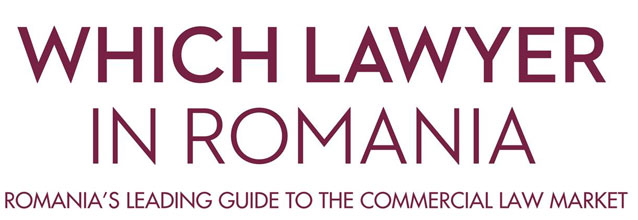
With a view to eliminate barriers to new investments in renewable power generation capacities, the Romanian Energy Regulatory Authority (“ANRE”) has recently amended the Regulation for the connection of the users to the public interest grid (the “Connection Regulation”) for eliminating a highly debated requirement of the grid connection process. The change was made through Order no. 41/2021 for the amendment of the Connection Regulation which was published in the Official Gazette of Romania on June 23, 2021 (the “Order no. 41/2021”).
-
Scope of amendment
The Connection Regulation in force before Order no. 41/2021 provided that the connection application (which is the very first step in the grid connection process) should be accompanied, among other, by the zonal urbanism plan (the “PUZ”), if such is required through the urban planning certificate issued for the respective investment. Failure to submit such document prevented the grid operator from going forward with the connection application. In addition, if the PUZ was not provided within 6 months as of the date the applicant was informed by the grid operator that its documentation was incomplete, the application was to be rejected.
Since obtaining the PUZ is a time-consuming process (taking up to 9 months depending on project and location characteristics), in practice, this requirement caused serios delays in the application for grid connection. Also, considering the limited availability of the grid capacity and that priority in securing such capacity is obtained on a first come, first served basis, delays in applying for connection caused insecurities regarding the availability of connection capacity when completing the PUZ.
On a different note, from a practical perspective, the information contained in the PUZ was not necessary to the grid operator in the elaboration of the connection solution. It seems that the reason for which this requirement was inserted back in 2013 was to prevent the blocking of the grid capacity by very incipient and uncertain projects, although there are no official documents from ANRE confirming this.
-
Industry proposals rejected by ANRE in the public consultation process
During the public consultations conducted by ANRE regarding the draft Order no. 45/2021, the industry associations requested the replacement of PUZ requirement with the set-up of a guarantee amounting to 10 per cent of the connection tariff, for capacities with installed capacities higher than 10 MW. According to such proposal, the guarantee was to be set up within 3 months from the issuance date of the grid connection permit, under the sanction of its expiry.
The justification for such proposal was to prevent a new wave of grid connection permits for unfeasible projects, as experienced in the period 2011 – 2014.
Nevertheless, this proposal was rejected by ANRE on the ground that it would cause barriers to access the grid, being thus contrary to the general objective of encouraging investments in the development of new renewable energy generation capacities.
-
Forward looking
This legislative change is expected to cause an increased number of grid connection requests in the coming period. In addition, it will also bring to surface certain inconsistencies between the practice of various local authorities related to urbanism permitting process.
Thus, another document requested by the Connection Regulation to accompany the grid connection application is the urban planning certificate for the issuance of the building permit for the envisaged power generation capacity. The urban planning certificate is a document whereby the local authorities competent to issue the building permit inform the developer on the endorsements, studies and other requirements needed to be fulfilled for obtaining the building permit for the specific envisaged project.
According to the general construction and urbanism legislation, in case the envisaged project does not comply with the existing urbanism documentation, the developer will be requested to obtain a PUZ amending the existing urbanism parameters so as to make them compatible with the envisaged investment.
During the period 2016 – 2017, the legislation regulated in detail the permitting process to be conducted when such a PUZ was required.
According to these legal provisions, in case the elaboration of the PUZ was necessary for a specific investment, the local authorities would (i) first issue an urban planning certificate for the PUZ (informing on the endorsements, studies and other requirements for approving the PUZ) and, only after PUZ approval, the authorities would (ii) issue the urban planning certificate for the building permit (informing on the endorsements, studies and other requirements for the building permit issuance).
As of the date such legal provisions were repealed, the practice of local authorities has largely varied, as follows:
-
some authorities continue to act in accordance with the repealed provisions, issuing the urban planning certificate for the building permit only after the PUZ is approved;
-
other authorities issue directly the urban planning certificate for the building permit, inserting therein that the issuance of the building permit is conditional upon PUZ approval;
-
other authorities issue two parallel urban planning certificates – one for the building permit (conditioning the building permit by the PUZ approval) and one for the PUZ.
According to the Connection Regulation, the grid connection application should be accompanied by the urban planning certificate for the building permit and not by the urban planning certificate for the PUZ. Consequently, developers of projects falling within the competence of the first authorities mentioned above will be disadvantaged and, from a practical perspective, will not benefit from the amendment made by Order no. 45/2021. Thus, although the PUZ is no longer a requirement for grid connection application, they will be able to obtain the urban planning certificate for the building permit (required in the connection process) only after the PUZ is approved, unlike developers of projects in other areas.
Further to the above, we hope that the impact likely to be caused by such inconsistencies will trigger unifying the practice of the local authorities.
article written by Mihaela Nyerges, Managing Associate MPR Partners



 June 28, 2021 09:20
June 28, 2021 09:20 










